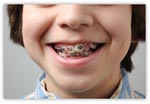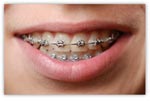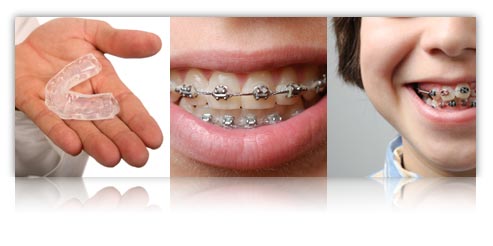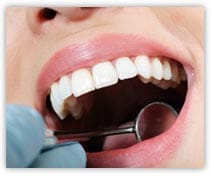Orthodontic Treatment for Adults and Children
Braces, those familiar orthodontic corrective appliances, have been a cornerstone in the field of dentistry for centuries. They serve a vital role in the treatment of dental and facial irregularities, offering not only the prospect of straight teeth but also the correction of bite irregularities, the closure of unsightly gaps, and the alignment of teeth and lips.
This article delves into the multifaceted world of braces, exploring their historical roots, their modern applications, and the pivotal role they play in achieving not only a captivating smile but also optimal oral health.
A Journey Through Orthodontics
Braces have a rich history that extends far beyond modern dental practices. Their roots can be traced back to ancient Greece, where early orthodontists employed base metals and catgut in an unwavering quest to enhance the natural beauty of smiles. This enduring human desire to perfect smiles has been a driving force in the development of orthodontics.
Today, highly trained orthodontists stand at the forefront of this discipline, working tirelessly to bring teeth, lips, and jaws into harmonious alignment. Straight teeth, as it turns out, offer benefits that extend well beyond aesthetics.
They function better, are easier to maintain, and are more likely to stand the test of time, making them a crucial component of overall oral health.

When are Braces Necessary?
Malocclusion or an improper bite can cause difficulty chewing, making teeth harder to clean which can lead to more problems such as tooth decay, gum disease and possible tooth loss.
Additionally an improper bite can cause abnormal wear to the enamel of your teeth, and can be the cause of pains and problems with the jaw.
It is an individual decision or a parent’s decision on behalf of their children to seek orthodontic care.
Many people live with the problems associated with malocclusion and don’t have the motivation to seek orthodontic treatment. On the other hand, many people feel more comfortable knowing that they have properly aligned, attractive teeth, and orthodontic care can help improve appearance and build self-confidence.
Besides the esthetic benefits of braces, orthodontic care also can contribute to long-term dental health. Straight, properly aligned teeth are an investment in your oral health.
A bad bite can make maintaining teeth more difficult and can lead to oral health problems that would have been much cheaper and easier to prevent than to fix.
Factors That May Cause Malocclusion:
A malocclusion (bad bite) is the most common oral health issue prompting orthodontic treatment. It may be caused by one or more of the following:
Small Mouth– A limited amount of space for the teeth to grow caused by a small mouth can foster crowding once the permanent teeth come in.
Extra Teeth/Not Enough Teeth– The development of extra teeth or lack of teeth that do not develop can affect your bite.
Misaligned Jaw or Supporting Bone– Malocclusion from a misaligned jaw or supporting bone structure can affect the bite. This can result in difficulty chewing and speaking, or otherwise impact the functionality of the teeth. This can also be attributed to additional oral health problems such as TMJ and teeth grinding (bruxing).
Premature Loss of Primary Teeth- When a primary (baby) tooth is lost too early, the permanent tooth loses its guide and can drift or come into the mouth incorrectly. Sometimes the permanent teeth may be crowded, or they may come in only partially. In some cases, the teeth next to the primary tooth that was lost too early can move or tilt into the space left by the missing tooth and

External Causes of an Irregular Bite:
Trauma- Teeth that have been fractured or knocked out and then replaced may fuse with the bone that surrounds them. When this happens in a growing child, the teeth will not be able to line up properly in the jaw, causing an irregular bite.
Prolonged pacifier use or thumb sucking- These adolescent habits can cause bite irregularity, such as a pronounced protrusion (extension) of your upper teeth over your lower teeth.Tongue Thrusting- Often times children thrust their tongue forward, pressing it against the lips with a force that can result in the protrusion (extension) of teeth, or “open bite,” among other problems.

When Is the Right Time for Orthodontic Treatment?
The American Association of Orthodontists recommends that children have an orthodontic screening by age seven.
By this age most if not all of the permanent teeth have erupted to allow an orthodontist to identify potential problems.
Having a screening this early in a child’s life has many advantages. As a child grows, it is easier to help the teeth come in straighter and this is when treatment is most effective.
Also the factors (mentioned above) may be developed by children between the ages of six and 12, the same time in which the permanent teeth start to erupt.
Therefore in order to prevent malocclusion from genetic or external factors an orthodontist may recommend that a child’s dental braces should begin between the ages of eight and 14 in order to achieve optimal results.
Anticipating problems associated with developing teeth and jaw growth may help to plan an orthodontic treatment accordingly.
Adults can benefit from the same treatments as children in an attempt to have properly aligned, properly functioning teeth.
The process for adults is basically the same as is for children, however adult treatment can be more complicated and may require more than one dental professional to fully correct a problem.
Certain corrections may not be possible utilizing braces alone; this is due to the fact that adult facial bones are no longer growing.
Adult patients may be more susceptible to gum problems and will need to address these, or they may have skeletal (jaw alignment) problems that require corrective jaw surgery.
Either way it is important that people of any age receive a proper evaluation to prevent further oral health problems and to promote a healthy smile.

Types of Braces
Advancements in dental technology have allowed for various choices of orthodontic treatments.
Braces have become exceedingly more comfortable over the years and the options for different types of materials have made the process more enjoyable for both children and adults.
Braces are made of metal, ceramic or plastic. The most common of treatments and the one that usually comes to mind is done using stainless steel brackets.
The cosmetic approach that is most appealing for adults that wish to keep a more mature image is the option of clear aligners such as Invisalign or ceramic brackets.
If you are considering braces you should consult with your orthodontist to discuss your available options.

Cost of Braces
The cost of braces will vary for a variety of reasons, but most people can expect to pay between $3,000 and $7,000.
The factors that effect the cost include type of treatment, the duration of treatment, the orthodontist, location, your dental insurance and any other restorative work that may need to be completed prior to or throughout treatment.
Products such as Invisalign may cost more than traditional braces, but they tend to fall on the high end of the above mentioned costs.
Many orthodontists will offer various financing options to ensure all patients who need orthodontic care can afford it. Some dental insurance companies may cover part of the cost of braces, so check with your provider to see if you are eligible.
Getting Braces
Braces work by applying continuous pressure to move teeth in a specific direction as deemed by your orthodontist. Braces are worn for an average of one to three years, depending on the necessary treatment.
As treatment progresses, teeth change position, and the braces must be adjusted accordingly. Frequent visits to your orthodontist will allow him/her to evaluate your progress.
You can expect the braces to be uncomfortable for the first few days after application. Your teeth may experience soreness, and the wires, brackets and bands may irritate your tongue, cheeks or lips.
Most of the discomfort will disappear within a week or two, although you may experience moderate pain when wires are changed or adjusted.
Your orthodontists may recommend taking ibuprofen (Motrin, Advil) or other over-the-counter painkillers can help to ease any discomfort.
